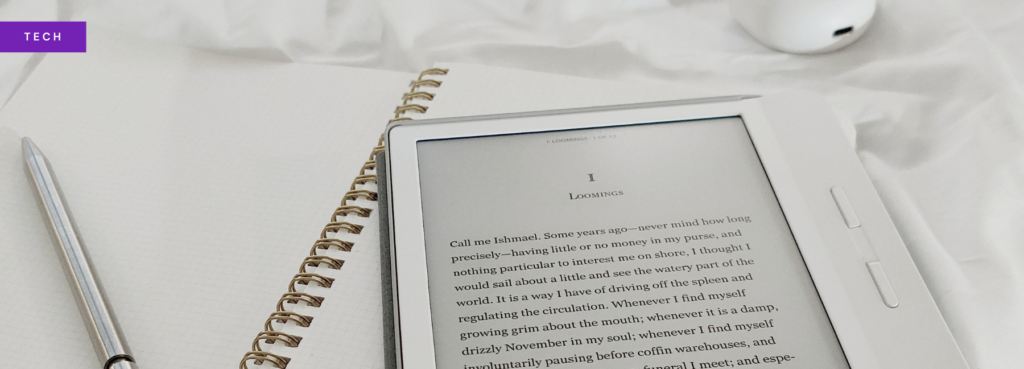Reader analytics for data-smart publishing

Success in publishing can seem like a lottery.
In reality, publishing success is driven by specific elements that can be optimised, if properly measured and understood.
Publishers and authors skilled at collecting and interpreting data and combining data-smart insights with an instinct for readers’ tastes and good storytelling are generally more successful.
This post explores a few of the ways for leveraging reading data to achieve success in publishing.
Big data, small data – why should publishers care about data?
In all walks of life data helps us understand the past, predict the future, understand causal relationships, spot correlations and make better decisions.
Publishing is no exception to this rule.
Publishers have lots of data already. These are things such as in-house sales and returns data, number of reviews on Goodreads, an author’s social media following, Nielsen sales data on comparable books, and bestseller charts.
This kind of data only tells us so much, though. Often there is a need to actively seek out and collect very specific kinds of data to generate unique audience insights. Data on how readers engage with books is the most valuable kind of data for editors and marketers to seek out in their quest for success.
How can publishers collect reading data?
Ebooks make it possible to collect reading data in ways that were never possible for print.
Unfortunately, Amazon does not share data on how its users read books. Apple does not either. Thus most reading and engagement data is off limits to authors and publishers.
However, there are other ways of collecting reading data.
Modern ebooks can be modified with JavaScript files to record and transmit data – with the user’s consent of course – even when the reader is using a reading application such as Apple Books. The data collection happens from within the ebook itself.
Another way is to provide the user with a bespoke reading app, such as the Jellybooks Cloud Reader (and its white-label versions), and collect the reading data directly via the reading app and not the book.
These software tools can be applied to books sold via retailers, but the most powerful applications are for samples and excerpts, review copies, audience insight research, rights catalogues, direct sales and other publishing workflows.
Audience testing for books
One well-established process is to conduct an audience test prior to publication to help better position and market an upcoming title.
This works as follows: a modified ebook is made available as early draft or galley to 300 to 500 test readers some two to twelve months prior to publication. In return for the complimentary book readers provide information on their interests, send their reading data at the click of a button while reading, and complete a short survey at the end of the book.
The data is summarised as five key performance indicators (KPIs) that have been found to represent reader engagement and to predict market success:
- Completion rate (CR) – What percentage of test readers finished the book?
- Satisfaction Index (SI) – Did readers who finished the book enjoy it?
- Recommendation Factor (RF) – Would readers recommend the book to others?
- Cover-match-factor (CMF) – Did the cover fit the narrative and content?
- Velocity – What was the median time to it took a reader to complete the book?
This data is collected and evaluated with special algorithms and broken down by age and gender, and by reader attributes such as whether the reader has read an earlier book by the same author or what kind of movies, TV and Netflix shows the reader has watched. From this data an in-depth profile is created of a book’s high-engagement audience.
The same process can also be used in A/B testing covers. The power of A/B cover tests is that users are not aware that different covers are part of the test. This allows publishers to tease out the subconscious influences that covers have on reader’s behaviour and engagement. In an A/B or multivariate cover test publishers measure how the engagement KPIs change when different cover versions are displayed to distinct groups of readers. Covers have a huge impact. Covers pull (stimulate a reader to start reading a book), but also signal to the user what to expect and set expectations. If these expectations are not met, then the satisfaction index and recommendation factor drop significantly. A lower SI and RF score means that the potential for news of a book to spread by word-of-mouth will fizzle. With this method, it is possible to measure quantitatively if a cover will turn a book into a word-of-mouth sensation or drop from view overnight.
This kind of research sounds expensive, but the cost is comparatively modest at a few hundred pounds.
Nudging readers
The availability of reading data means readers can be nudged to (a) start reading if they have requested a review copy, but not started reading it yet, (b) to continue reading, if they have paused for a week or more, and (c) to complete a survey or submit a review, if they have not. Nudges need to be timely and contextual or readers get annoyed by them. Data ensures nudges are both relevant and timely. Used wisely data-smart email reminders dramatically improve reader engagement in review campaigns and other publishing workflows.
Increasing pre-orders for upcoming books
Another application for reading data is a data-smart approach to generating pre-orders. Leveraging cloud-based reading applications the first ten percent of a book are offered for free to readers at the click of a button. The links are distributed via social media posts, in emails, as QR codes, or on product pages. Using the reading and engagement data, authors and publishers can measure how many readers click on a link, read a sample for two minutes, five minutes or more, and click on the buy link inside the book. In other words the entire sales funnel for a pre-order or sakes campaign can be visualised. Data enables nimble and agile marketers to identify in real time which social media post or emails are driving engagement and orders so they can spend their budget where it has the biggest impact on sales.
Driving book sales
Another application are ebook excerpts made available via “peek inside” tools as used by Blackwell’s Books and other UK high street booksellers. This tool allows retailers and publishers to embed digital excerpts and snippets on their product pages. Data on reader engagement is collected and aggregated automatically through a dedicated web reader. Readers remain anonymous in this case. The platform supports sales, but also generates real-time insights into how readers discover books online and share them on social media. This data provides insights into the path from discovery to purchase and how readers engage with books across a wide range of retail channels. Market trends are thus available weeks even months ahead of sales reports!
Data-smart innovation in publishing
Data-powered publishing has been around for several years, but is still in its infancy.
The above examples are but a brief glimpse into the potential for data-smart publishing. New applications are emerging continuously. Discover more about what’s possible and what is coming soon at https://www.jellybooks.com/about/publishers or ask and discuss below.
Andrew Rhomberg is the founder of Brixton-based reader analytics and publishing technology firm Jellybooks. Prior to Jellybooks he worked at txtr, Skype, Reciva, and range of other start-ups in the music, media, internet and consumer electronics industry. He has a Ph.D. in analytical chemistry from MIT.





